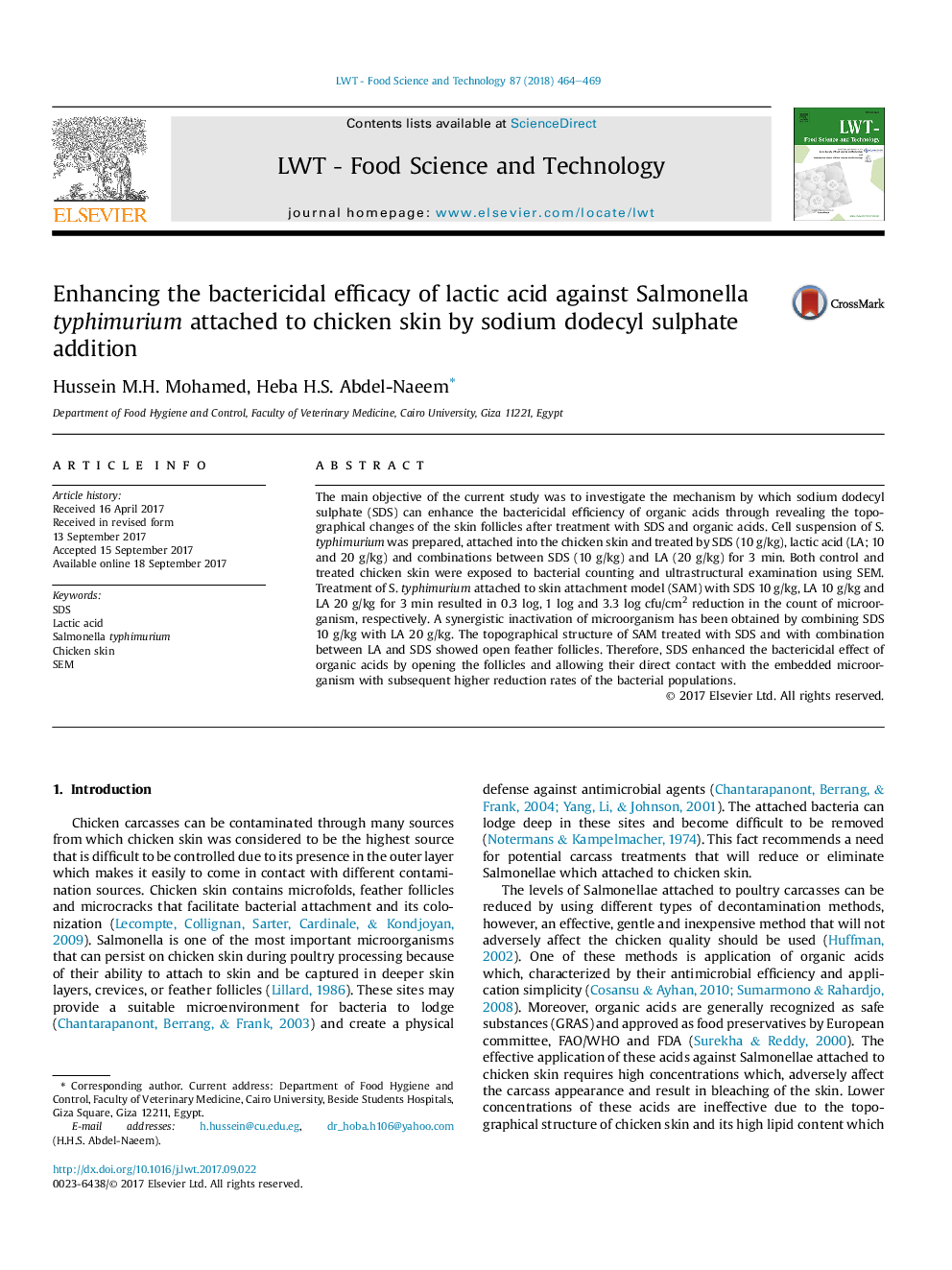| Article ID | Journal | Published Year | Pages | File Type |
|---|---|---|---|---|
| 5768634 | LWT - Food Science and Technology | 2018 | 6 Pages |
â¢Sodium dodecyl sulfate facilitates the opening of chicken skin follicles.â¢The bactericidal efficiency of organic acids could be enhanced by SDS.â¢SDS permitted the direct contact of lactic acid with microorganism.â¢Combining SDS with lactic acid successfully inactivated S. typhimurium embedded into the skin.
The main objective of the current study was to investigate the mechanism by which sodium dodecyl sulphate (SDS) can enhance the bactericidal efficiency of organic acids through revealing the topographical changes of the skin follicles after treatment with SDS and organic acids. Cell suspension of S. typhimurium was prepared, attached into the chicken skin and treated by SDS (10Â g/kg), lactic acid (LA; 10 and 20Â g/kg) and combinations between SDS (10Â g/kg) and LA (20Â g/kg) for 3Â min. Both control and treated chicken skin were exposed to bacterial counting and ultrastructural examination using SEM. Treatment of S. typhimurium attached to skin attachment model (SAM) with SDS 10Â g/kg, LA 10Â g/kg and LA 20Â g/kg for 3Â min resulted in 0.3 log, 1 log and 3.3 log cfu/cm2 reduction in the count of microorganism, respectively. A synergistic inactivation of microorganism has been obtained by combining SDS 10Â g/kg with LA 20Â g/kg. The topographical structure of SAM treated with SDS and with combination between LA and SDS showed open feather follicles. Therefore, SDS enhanced the bactericidal effect of organic acids by opening the follicles and allowing their direct contact with the embedded microorganism with subsequent higher reduction rates of the bacterial populations.
